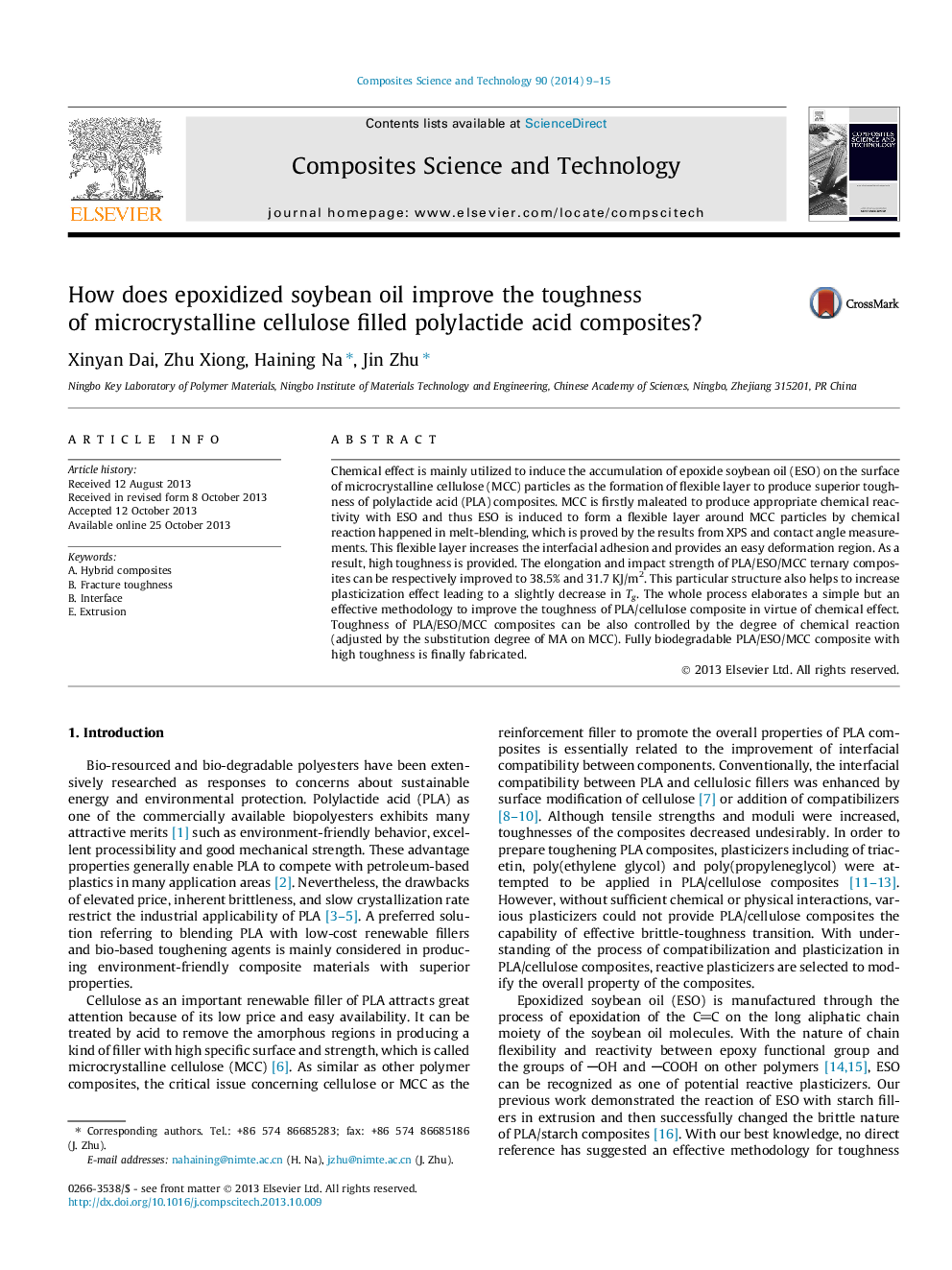| Article ID | Journal | Published Year | Pages | File Type |
|---|---|---|---|---|
| 7215808 | Composites Science and Technology | 2014 | 7 Pages |
Abstract
Chemical effect is mainly utilized to induce the accumulation of epoxide soybean oil (ESO) on the surface of microcrystalline cellulose (MCC) particles as the formation of flexible layer to produce superior toughness of polylactide acid (PLA) composites. MCC is firstly maleated to produce appropriate chemical reactivity with ESO and thus ESO is induced to form a flexible layer around MCC particles by chemical reaction happened in melt-blending, which is proved by the results from XPS and contact angle measurements. This flexible layer increases the interfacial adhesion and provides an easy deformation region. As a result, high toughness is provided. The elongation and impact strength of PLA/ESO/MCC ternary composites can be respectively improved to 38.5% and 31.7Â KJ/m2. This particular structure also helps to increase plasticization effect leading to a slightly decrease in Tg. The whole process elaborates a simple but an effective methodology to improve the toughness of PLA/cellulose composite in virtue of chemical effect. Toughness of PLA/ESO/MCC composites can be also controlled by the degree of chemical reaction (adjusted by the substitution degree of MA on MCC). Fully biodegradable PLA/ESO/MCC composite with high toughness is finally fabricated.
Related Topics
Physical Sciences and Engineering
Engineering
Engineering (General)
Authors
Xinyan Dai, Zhu Xiong, Haining Na, Jin Zhu,
